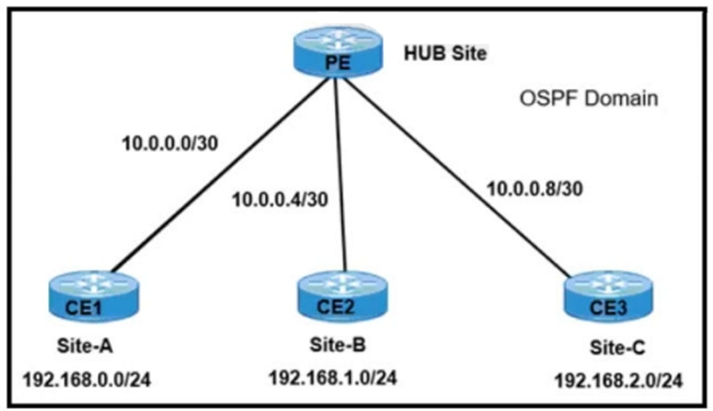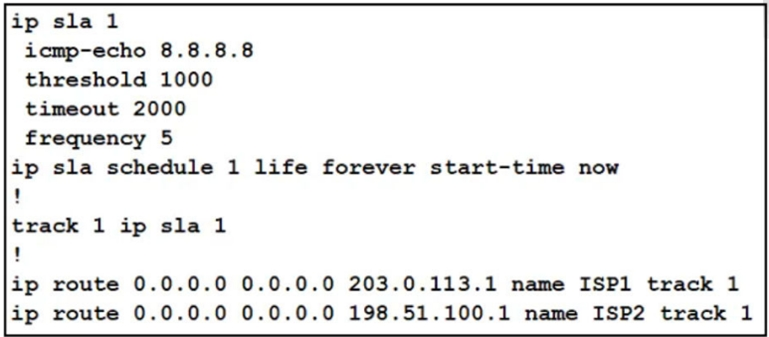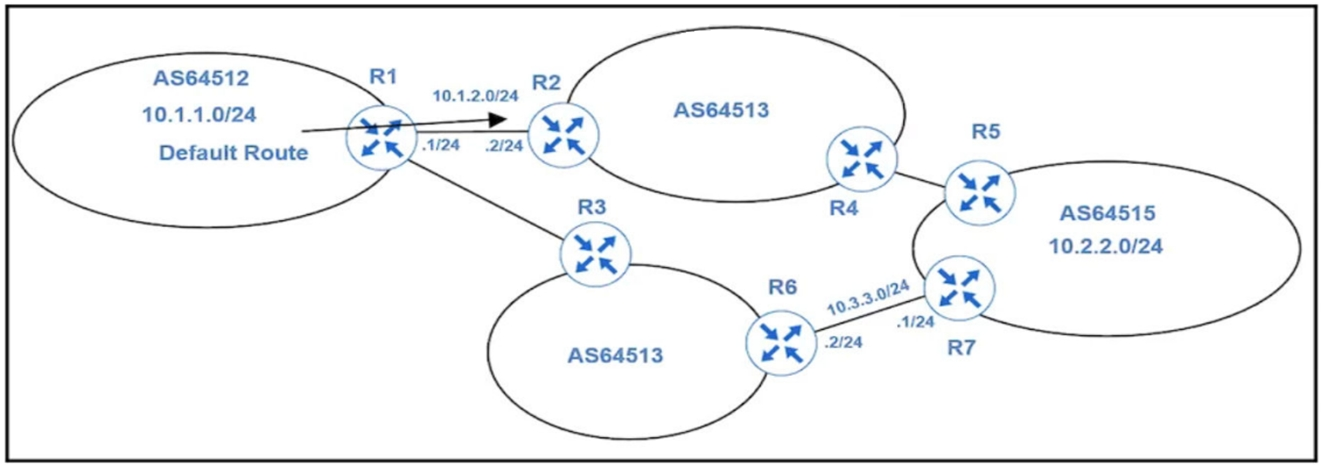
Refer to the exhibit. Clients on ALS2 receive IPv4 and IPv6 addresses, but clients on ALS1 receive only IPv4 addresses and not IPv6 addresses. Which action on
DSW1 allows clients on ALS1 to receive IPv6 addresses?
B

Refer to the exhibit. An engineer configured BGP and wants to select the path from 10.77.255.57 as the best path instead of current best path. Which action resolves the issue?
B
What is a function of IPv6 Source Guard?
B

Refer to the exhibit. A network engineer must establish communication between three different customer sites with these requirements:
* Site-A: must be restricted to access to any users at Site-B or Site-C.
* Site-B and Site-C: must be able to communicate between sites and share routes using OSPF.
PE interface configuration:
interface FastEthernet0/0
ip vrf forwarding Site-A
!
interface FastEthernet0/1
ip vrf forwarding SharedSites
!
interface FastEthernet0/2
ip vrf forwarding SharedSites
Which configuration meets the requirements?
C
What is LDP label binding?
A
Reference:
https://www.cisco.com/en/US/docs/general/Test/kwoodwar/fsinbd4.pdf

Refer to the exhibit. An administrator configures a router to stop using a particular default route if the DNS server 8.8.8.8 is not reachable through that route.
However, this configuration did not work as desired and the default route still works even if the DNS server 8.8.8.8 is unreachable. Which two configuration changes resolve the issue? (Choose two.)
BE

Refer to the exhibit. The network administrator configured the Chicago router to mutually redistribute the LA and NewYork routes with OSPF routes to be summarized as a single route in EIGRP using the longest summary mask: router eigrp 100 redistribute ospf 1 metric 10 10 10 10 10 router ospf 1 redistribute eigrp 100 subnets
!
interface E 0/0
ip summary-address eigrp 100 172.16.0.0 255.255.0.0
After the configuration, the New York router receives all the specific LA routes but the summary route. Which set of configurations resolves the issue on the
Chicago router?
B

Refer to the exhibit. An engineer must configure PBR on R1 to reach to 10.2.2.0/24 via R3 AS64513 as the primary path and a backup route through default route via R2 AS64513. All BGP routes are in the routing table of R1, but a static default route overrides BGP routes. Which PBR configuration achieves the objective?
A
What is the function of BFD?
C

Refer to the exhibit. When an FTP client attempts to use passive FTP to connect to the FTP server, the file transfers fail. Which action resolves the issue?
C